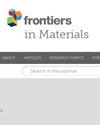玄武岩纤维增强纳米二氧化硅混凝土高温后力学性能的实验研究
IF 2.6
4区 材料科学
Q3 MATERIALS SCIENCE, MULTIDISCIPLINARY
引用次数: 0
摘要
在提高混凝土耐高温性能方面,掺入纤维材料是一种有效的方法。本研究重点评估了素混凝土、纳米二氧化硅混凝土和玄武岩纤维纳米二氧化硅混凝土在高温下的立方体抗压强度、劈裂拉伸强度、棱柱体抗压强度和抗折强度。随后,建立了混凝土强度预测模型,并对试件进行了微观结构分析。结果表明,与普通混凝土相比,暴露于 800°C 高温后,玄武岩纤维增强纳米二氧化硅混凝土的立方体抗压强度、劈裂抗拉强度、棱柱体抗压强度和抗折强度分别提高了 33.7%、15.6%、10.4% 和 17.2%。此外,强度预测模型的拟合值均在 0.9 以上。微观结构分析表明,纳米二氧化硅₂的填充效应使混凝土基体更加致密,而玄武岩纤维则有效抑制了混凝土基体中裂缝的形成。此外,纳米二氧化硅还能促进 Ca(OH)₂(CH)形成水合硅酸钙,并附着在玄武岩纤维上,从而增强粘结力,降低混凝土剥落的风险。本文章由计算机程序翻译,如有差异,请以英文原文为准。
Experimental study on mechanical properties of basalt fiber reinforced nano-SiO2 concrete after high temperature
In enhancing the high-temperature resistance of concrete, incorporating fiber materials was established as an effective approach. This study focused on evaluating the cubic compressive strength, splitting tensile strength, prism compressive strength, and flexural strength of plain concrete, nano-SiO2 concrete, and basalt fiber nano-SiO2 concrete when subjected to elevated temperatures. Subsequently, a concrete strength prediction model was established, and a microstructure analysis of the specimens was conducted. The results indicated that after exposure to 800°C, the cubic compressive strength, splitting tensile strength, prism compressive strength, and flexural strength of basalt fiber-reinforced nano-SiO₂ concrete increased by 33.7%, 15.6%, 10.4%, and 17.2%, respectively, compared to plain concrete. Furthermore, the fitting values of the strength prediction model were all above 0.9. Microstructure analysis revealed that the filling effect of nano-SiO₂ made the concrete matrix denser, while the basalt fiber effectively restrained the formation of cracks in the concrete matrix. Additionally, nano-SiO₂ promoted the formation of hydrated calcium silicate from Ca(OH)₂(CH) and adhered to the basalt fiber, enhancing bonding and reducing the risk of concrete spalling.
求助全文
通过发布文献求助,成功后即可免费获取论文全文。
去求助
来源期刊

Frontiers in Materials
Materials Science-Materials Science (miscellaneous)
CiteScore
4.80
自引率
6.20%
发文量
749
审稿时长
12 weeks
期刊介绍:
Frontiers in Materials is a high visibility journal publishing rigorously peer-reviewed research across the entire breadth of materials science and engineering. This interdisciplinary open-access journal is at the forefront of disseminating and communicating scientific knowledge and impactful discoveries to researchers across academia and industry, and the public worldwide.
Founded upon a research community driven approach, this Journal provides a balanced and comprehensive offering of Specialty Sections, each of which has a dedicated Editorial Board of leading experts in the respective field.
 求助内容:
求助内容: 应助结果提醒方式:
应助结果提醒方式:


